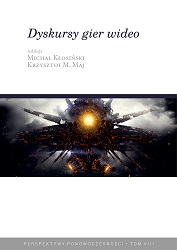


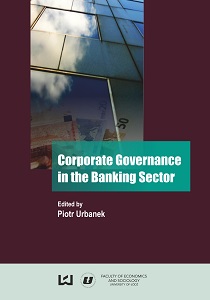
Keywords: financial stability;bank system;corporate governance
The aim of the paper is to provide a preliminary answer to the following questions: 1. What are the theoretical and practical consequences of the absence of universally accepted definitions of financial stability? 2. What could be potential advantages to elaborate, if not a unique, so at least a limited number of widely accepted definitions of “financial stability” allowing to assess multiple aspects of functioning of various kinds of financial systems? 3. What should be the assumptions of such definitions?
More...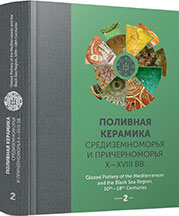
Keywords: Middle Irtysh region; 17th — first half of the 18th century; Russian settlements; Chinese porcelain; trade relations
The process of accession of Western Siberia to the Russian state had begun in the end of the 16th century. Russian pioneers were looking for opportunities and ways of communication, both with natives, and with the population of the territories, adjacent to Western Siberia because of the conditions of the new cultural environment and constant military danger. This enabled commercial relations and cultural exchange. Among all range of imported goods the significant place was taken by the things which emphasized the social status and welfare of their owners. Chinese porcelain which was widely spread in the region despite its high price can serve a good example of such prestigious things. It was imported into the territory of Central Irtysh region tduring the mid 17th — first half of the 18th centuries, which can be confirmed by materials of archaeological research.
More...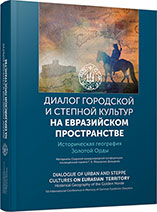
Keywords: Primorye; Early Middle Ages; Balhae state; Koksharovka-8 funerary complex site; grave goods
In 2012—2015, the Koksharovka-8 burial complex site having no analogy in Primorye medieval archeology was investigated. The remains of a monumental building of rectangular shape, 15 × 16 m built of stone slabs were studied. The design features of the structure and stages of its construction were identified. The studies have shown that a high-ranking nobleman was probably buried there. This is evidenced by both the monumental character of the structure and the nature of the grave goods, including items made of precious metals, most of which were looted by robbers as early as in the Middle Ages. The monument is directly related to the Koksharovka-1 hill fort site, where similar ceramic material has been discovered. Based on the study of the artifacts and radiocarbon analysis data, the burial complex may be tentatively dated to the 10th—11th cc.
More...
Keywords: Transbaikalia; Middle Ages; Mongols; homestead; structures; structural design of dwellings;tile;
The Alestuy homestead site is located nine kilometers north-east from the Khirkhira Mongolian medieval town in East Baikal region. It consisted of a 1.5 m high filled-up platform with dimensions 17×28—32 m extended along the north-south line. The platform was surrounded by a low rectangular bank (0.3 m) with dimensions 71×71 m. The bank was oriented almost by the cardinal points. We have conventionally marked it as the main yard. Another 64×33 m rectangular banked area was annexed to the northern bank. We studied the northern and western parts of the homestead and the neighboring territory of the yard up to the bank. The total excavation area was 400 sq. m. Among the finds there were a large number of iron nails of various sizes, fragments of different iron and bronze goods, a flat arrowhead, a stone smoother, a fragment of a plowshare, bits of slag, fragments of a crucible, an iron lock, wheel hub liners, the rim and pieces of the walls of iron cauldrons, birch bark fragments with holes, dice made from tiles and some items made from rectangular tiles with holes. We also found 16 whole bricks. The most commonly spread material was the roof tiles. Typologically the tiles from the Alestuy homestead were compatible to the tiles from the Khirkhira town, Konduisky town, and had many features in common with the Narsatuy homestead from Buryatia and Den-Terek town from Tuva and Avarga from Mongolia.
More...
Keywords: Soutern Aral; Golden Horde; Pulzhay hillfort; mosque; сaravan-seray
Archaeological studies are used to examine architectural and constructive design features of a mosque and a caravanserai at the Puljai hillfort site. In the context of available analogies from the Central Asian region, the mosque can be attributed to the category of pray kiosk-mosques with aivans (terraces). The peshtak portal, residential and household structures are typical of the caravanserai. These structures were used in the Golden Horde era.
More...
Keywords: Golden Horde; Bolgar city; fortification; earthen embankments; rampart excavation technique.
The authors consider views of the researchers who have studied the fortification of the Bolgar city (the capital of Volga Bulgaria in the 9th to 15th cc.) in the second half of the 20th century. Their conclusions about the “pillar structure” towers above the 14th-century rampart and the wooden walls of similar design are refuted by the data of the excavations conducted by them. The new excavation data revealed that the rampart around Bolgar represented an embankment with the crest lacking any traces of additional defensive structures. It is supposed that their absence is due to the loss of fortification traditions during the rule of the Golden Horde (13th and 14th centuries).
More...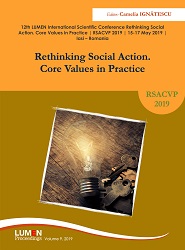
Keywords: Workplace deviant behavior; Employee deviance; Organizational ethical climate; Code of ethics; Business Ethics;
This study investigates how ethical climate and perceived existence of organizational ethical codes impact employee deviance. Due to the importance and extensiveness of the employee deviant behavior problem, it is found denotative to examine the antecedents contributing to the occurrence of employee deviance in organizations. In the light of the previous literature study, several factors that have been associated with employee deviance have been reviewed and it was seen that workplace ethics was examined as a contextual variable influencing such behaviors in the organizations. Thus, in the current study, it was aimed to evaluate the impacts of existence of ethical codes and ethical climate on employees’ deviant behaviors within the organization. A quantitative survey was performed among 230 employees in public and private organizations in various sectors, such as education, health, insurance, banking, telecommunication, and retailing. The data obtained from the research were evaluated with statistical programme and the findings revealed that all five dimensions of ethical climate had significant impacts on organizational deviance. The instrumental and independence dimensions had positive impacts on organizational deviance, whereas caring, law and codes and rules dimensions had negative impacts on such behaviors. Further, it was reported that the perceived existence of organizational code of conduct had significant negative impact on organizational deviance. The findings of the research were evaluated and discussed with the implications of the previous empirical findings and both conceptual and practical suggestions were provided for the future studies.
More...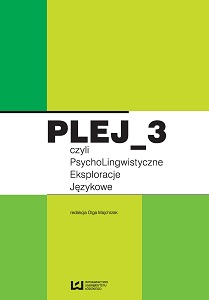
Keywords: L3 pronunciation;L2 pronunciation;segmental production;vowels;L2 status
It is widely agreed that acquisition of a sound system of a second language always presents a great challenge for L2 learners (e.g. Rojczyk, 2010). Numerous studies (e.g. Nowacka, 2010; Flege, 1991) prove that L2 learners whose first language has a scarce number of sounds, encounter difficulties in distinguishing L2 sound categories and tend to apply their L1 segments to new contexts. There is abundance of studies examining L2 learners’ successes and failures in production of L1 and L2 sounds, especially vowels (e.g. Flege, 1992; Nowacka, 2010; Rojczyk, 2010). However, the situation becomes more complicated when we consider third language production. While in the case of L2 segmental production the number of factors affecting L2 sounds is rather limited (either interference from learners’ L1 or some kind of L2 intralingual influence), in the case of L3 segmental production we may encounter L1→L3, L2→L3, L1+L2→L3 or L3 intralingual interference. This makes separation of L3 sounds a much more complex process. The aim of this paper is to examine whether speakers of L1 Polish, L2 English and L3 German are able to separate new, L3 vowel categories from their native and L2 categories. The research presented in this article is a part of a larger project assessing production of L3 segments. This time the focus is on German /y/. This vowel was chosen since it is regarded as especially difficult for Polish learners of German and it is frequently substituted with some other sounds. A group of English philology (Polish-English- German translation and interpretation programme) students was chosen to participate in this study. They were native speakers of Polish, advanced speakers of English and upper-intermediate users of German. They had been taught both English and German pronunciation courses during their studies at the University of Silesia. The subjects were asked to produce words containing analysed vowels, namely: P /u/, P /i/, E /uÉ/, E /iÉ/, E /ɪ/ and G /y/. All examined vowels were embedded in a /bVt/ context. The target /bVt/ words were then embedded in carrier sentences: I said /bVt/ this time in English, Ich sag’ /bVt/ diesmal in German and Mówię /bVt/ teraz in Polish, in a non-final position. The sentences were presented to subjects on a computer screen and the produced chunks were stored in a notebook’s memory as .wav files ready for inspection. The Praat 5.3.12 speech-analysis software package (Boersma, 2001) was used to measure and analyse the recordings. The obtained results suggest that L2 affects L3 segmental production to a significant extent. Learners find it difficult to separate all “new” and “old” vowel categories, especially if they are perceived as “similar” to one another and when learners strive to sound “foreign”.
More...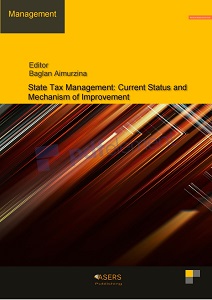
Keywords: organization; management; tax;
Based on the works of leading domestic and foreign economists in the field of the theory and practice of organizing taxes and finance, tax management, fundamental provisions on the development of market economy, the theoretical nature of taxes, which includes the theory and methodology of managing tax relations, tax and non-tax revenues of the state budget of Kazakhstan in new integration conditions. The elements and mechanisms of the functioning of the tax system of the Republic of Kazakhstan are shown.
More...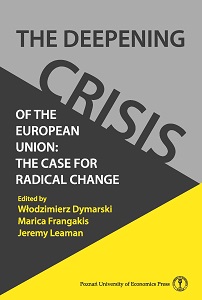
Keywords: European Union;Eurozone crisis;
Author examines the design faults of the Euro System with a detailed macroeconomic analysis of its structural contradictions. In particular he presents a differentiated diagnosis of the current crisis, which he contrasts with the orthodox focus on the symptom of sovereign debt. The conclusion produces a stark choice between 'the break-up of the Euro-system or its radical re-foundation'.
More...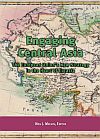
Keywords: EU; Kazakhstan; Energy and security cooperation; Human rights; Democratic reforms;
Kazakhstan’s continuing socio-economic and political stability, a formal commitment to political reforms and an avowed pro-Western orientation make it the European Union’s most reliable partner in the Central Asian region. Kazakhstan’s expanding economic and security partnership with Europe is part of its ‘multi-vectoral’ foreign policy geared at balancing its ties with Russia, China, the Western states and the Muslim world. Kazakhstan has skilfully utilised its geostrategic location as a corridor between Asia and Europe and the country’s rising profile as the leading oil exporter to Europe after Russia (almost 80% of EU imports from Kazakhstan consist of fuel) to carve out a special niche for itself within the European market.
More...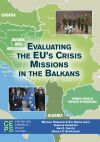
Keywords: Governance; EU Crisis management; coherent planing;
This chapter assesses the translation of recent European Union crisis management concepts into practice. In its quest for a comprehensive crisis management policy, has the EU been able to move from strategic concepts to coherent planning? Assuming an institutionalist perspective on organisational change, the chapter explores the gap between crisis management concepts and the organisational realities of everyday and work-level interactions. Through tracing the development of crisis management coordination in the EU architecture, the chapter takes stock of the successes and failures in the EU’s governance of its policies in this area. It contends that the Council and the Commission have followed different organisational strategies for implementing comprehensive crisis management operations and outlines three general trends in their relationship: convergence, coordination and compartmentalisation.
More...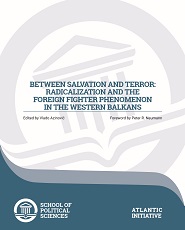
Keywords: North Macedonia; Macedonia; foreign fighters; terrorism; Western Balkans; terrorist threats; security; Salafism; religious radicalism;
The topic of religious radicalism in the Western Balkans has long attracted the attention of media, researchers, and security services. Ill-advised policy approaches to the issue, along with a lack of knowledge and information, mean the phenomenon has often been misused for political aims. In the last decade, reports about “growing terrorist threats,” “Islamic terrorism,” “terrorist training camps,” “dangerous Salafists,” etc. have burgeoned, with most of these “warnings” coming from self-proclaimed “security experts” and irresponsible politicians – who are regularly invited to present their security assessments in the media and at various conferences. Several incidents involving Salafi adherents from the region have further contributed to the idea that the Western Balkans is under threat from religious radicalism. In this climate, full of unconfirmed information and irrelevant speculation, security services have occasionally tried to calm the situation and relieve feelings of uncertainty among citizens by issuing official statements. [...]
More...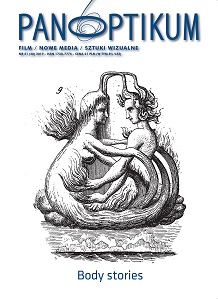
Keywords: body; affect; posthumanism; medical imaging; biometrics; plants; non-human actors
The aim of the article is to introduce the problem of plants’ representations in the contemporary artistic projects based on medical imaging. The author analyses the problem in the perspective of posthumanistic philosophy, especially in reference to the theories of animal studies (Wolfe, Bakoff, Waldau). She also introduces the concept of Michael Marder, who builds his argument around the question of whether people are the only ones who have political, social and ethical rights. The second part of the article concerns strategies and method of plants’ bodies parametrization used in the selected artistic project. The author presents a few of them to show how artists investigate the problem of identity, autonomy and agency of non-human beings, with special regard to plants. The projects are analyzed in reference to various theories of connections between human and non-human beings, as well as to biopolitics’ strategies.
More...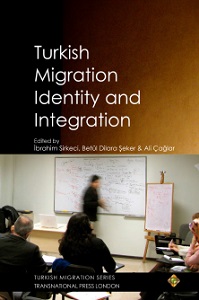
Keywords: references; France; Sweden; Turkey; Germany; migrations; immigration; culture; religion; language; communities; minorities; integration; labor relations; identity; Alevi; media; cinematography;
More...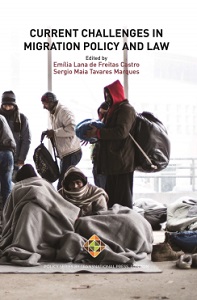
Keywords: China; migrations; transnational space; diaspora; politics; Austira; media;
In recent years, migration studies have increasingly started to draw attention to diaspora strategies pursued by nation states. Indeed, diaspora policies are becoming a common phenomenon in the globalized world: Large sending states such as China long have developed policies intended to embrace and control “their diaspora”. Using the example of Chinese migrants in Austria, this article focusses on China’s policies towards overseas Chinese and the complex transnational environments in which they unfold and evolve: How are these policies put into practice? And what actors exert influence on these processes? The mixed-method approach of this study is based on a qualitative content analysis of two Chinese language weeklies in Austria (Europe Weekly, hereafter: EW, and the Huaxinbao, HXB), of the Austrian Chinese internet forums www.achina.at (AC) and www.outuo.net (OT), as well as of Chinese state media. Included into the analysis are articles and postings that focus on activities of overseas Chinese organizations (mainly in Austria), on meetings between Chinese migrants and Chinese state officials, as well as on China’s overseas Chinese strategies. In addition, the analysis includes a critical interpretation and analysis of official Chinese documents, official statements by Chinese politicians, teaching materials for Chinese cadres, official publications on China’s diaspora politics, as well as of Chinese language research conducted in China.
More...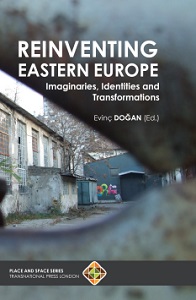
Keywords: Macedonia; identity; Skopje; urban image; Greece dispute;
Implemented by the Macedonian national party VMRO-DPMNE the project “Skopje 2014” renewed the urban image of Skopje, capital city of the (Former Yugoslav) Republic of Macedonia and promoted a narrative of direct descent from the Ancient Macedonians, epitomized by the figure of Alexander the Great. Impressive statues, fountains, a triumphal arch, and new massive buildings now stand in all their grandeur in the city centre of the small republic’s capital city. Although apparently meant to give a new face to Skopje, these urban changes are also strictly tied to a “great” national narrative concerning the Macedonian nation – its roots and origins, and are apparently shaping and changing, not only the urban image of Skopje but also the national identity of the Macedonians.
More...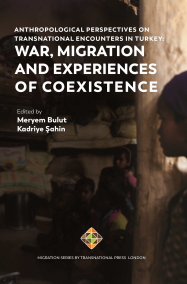
Keywords: migration; anthropology; guest; host; Somali refugees; Turkey; Burdur;
Without doubt, every migratory wave begets serious problems with many dimensions in the fields of education, employment, integration, or gender issues. A recent mass migratory move, if more numerous, can cause delays in policies towards an older refugee group. The Syrian war and the subsequent mass migration towards Turkey channeled both academic and administrative focus towards this group. As the transformative power of migration increases, so does the academic interest in this topic. In this respect, we can understand the abundance of research on Syrians compared to the paucity of studies on African refugees as a reflection of the size and impact of the Syrian stock and flows.
More...